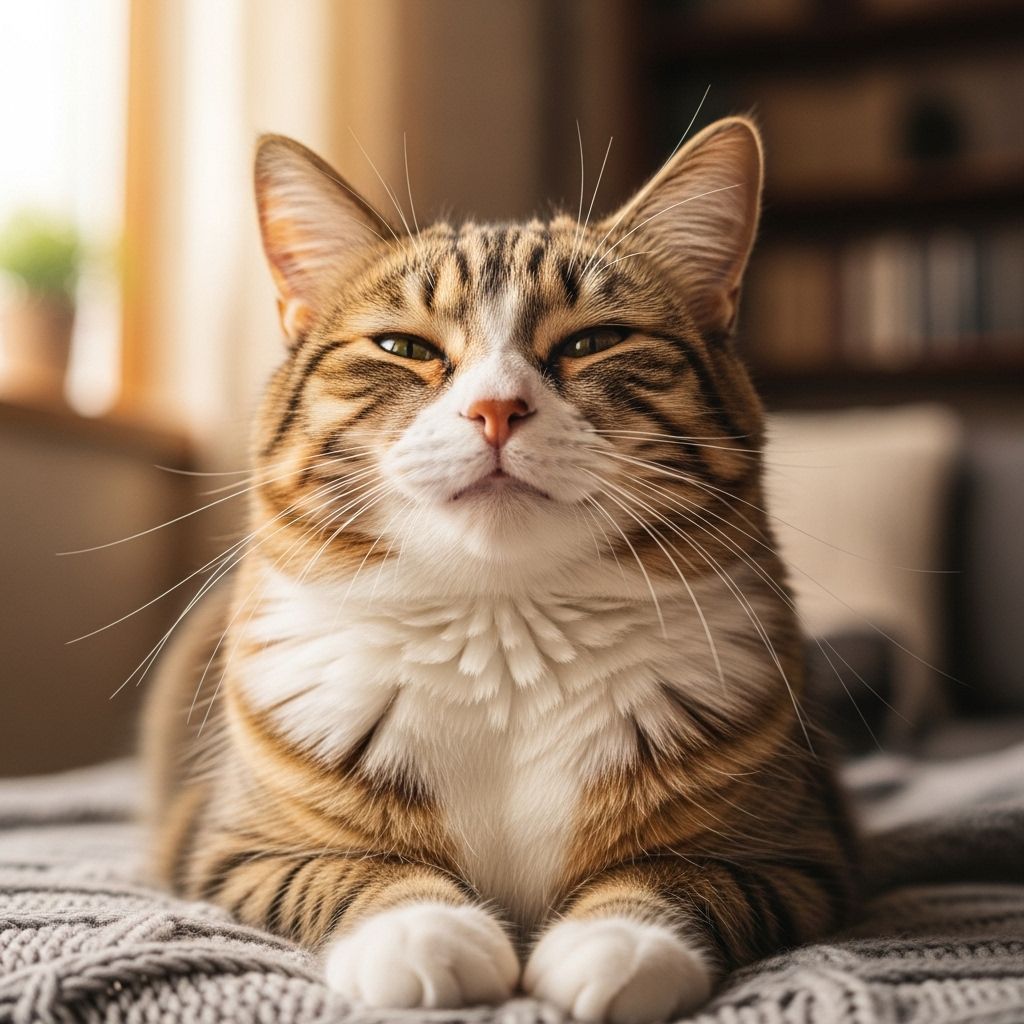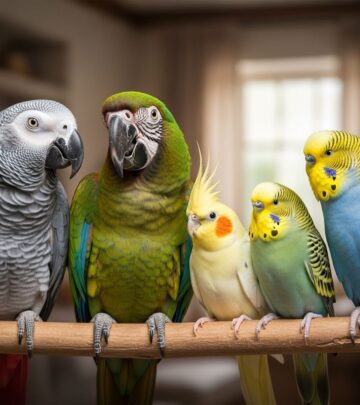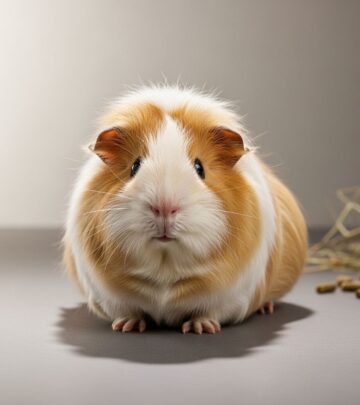Why Do Cats Purr: 5 Hidden Meanings Explained
Discover the fascinating science and multiple meanings behind your cat's soothing purr

Image: HearthJunction Design Team
Why Do Cats Purr? Understanding the 5 Hidden Meanings
The gentle rumble of a cat’s purr is one of the most recognizable and soothing sounds in the animal kingdom. This distinctive vocalization is often associated with a content feline lounging peacefully in a sunny spot or curled up in their favorite human’s lap. However, cat purring is far more complex and multifaceted than many pet parents realize. While we commonly associate purring with happiness, this unique sound serves multiple purposes in feline communication and may indicate a variety of different emotional and physical states.
Understanding why cats purr can help strengthen the bond between you and your feline companion while also alerting you to potential health or behavioral concerns. In this comprehensive guide, we’ll explore the fascinating science behind purring and decode the five primary meanings behind this mysterious feline vocalization.
The Science Behind Cat Purring
Before we delve into what your cat’s purring means, it’s helpful to understand how cats create this distinctive sound in the first place. Unlike many other vocalizations, a cat’s purr is produced during both inhaling and exhaling, creating that continuous, rhythmic vibration we find so calming.
The purring mechanism involves the rapid vibration of the muscles in the larynx (voice box) combined with the diaphragm moving during breathing. This creates a series of air vibrations as the cat breathes in and out, producing the characteristic purring sound. Most domestic cats purr at a frequency between 25 and 150 Hertz, though some can purr at even higher frequencies.
Interestingly, cats begin purring when they’re just a few days old, even before their eyes open. Kittens are born both deaf and blind, so purring serves as an essential early communication tool between mother cats and their offspring. This early development of purring highlights its fundamental importance in feline communication.
Why Do Cats Purr? The 5 Key Meanings
Cat purring is a complex vocalization that can signify numerous different things depending on the context, the cat’s body language, and other factors. Here are the five primary reasons cats purr:
1. Cats Purr When They’re Content
The most familiar and commonly recognized reason for purring is contentment. Cats often purr when they’re feeling relaxed, comfortable, and satisfied with their current situation. A content cat typically displays relaxed body language along with their purring – their facial expression is peaceful, their body is loose rather than tense, and they may slowly blink their eyes.
Cats frequently purr with contentment in situations such as:
- Lounging in a warm, familiar environment they consider safe
- During or immediately after eating a satisfying meal
- While resting comfortably in their pet parent’s lap
- When engaged in gentle grooming or being softly petted
- While nursing their kittens or bonding with family members
This type of purring is perhaps the most rewarding for cat owners, as it signals that your feline friend feels secure, happy, and at ease in your presence. The contentment purr is typically steady, rhythmic, and often accompanied by kneading behavior (sometimes called “making biscuits”) where the cat pushes their paws against a soft surface, mimicking the nursing behavior from kittenhood.
2. Cats Purr When They’re Anxious
Somewhat counterintuitively, cats also purr when experiencing anxiety or stress. This type of purring serves as a self-soothing mechanism – similar to how humans might hum or talk to themselves when nervous. A cat using purring to manage anxiety may display other signs of stress simultaneously, such as an arched back, flattened ears, dilated pupils, or a twitching tail.
You might observe anxiety-related purring when:
- Your cat is being examined at the veterinarian’s office
- After returning home from a stressful experience like a car ride
- During thunderstorms or fireworks displays
- When unfamiliar visitors enter their territory
- During changes in the household routine or environment
Some cats may walk around the house alternating between purring and meowing when anxious. This self-soothing purr helps cats regulate their emotions and recover from stressful situations. Understanding this type of purring can help you identify when your cat might need extra comfort, space, or reassurance.
3. Cats Purr When They’re Greeting
Many cats use a short, friendly purr as part of their greeting ritual when encountering familiar humans or other cats. This social purr is typically accompanied by other friendly body language: an upright tail with a slight curve at the tip, forward-pointing ears, and perhaps a gentle head-butt or rub against your legs.
Greeting purrs commonly occur when:
- You return home after being away
- Your cat approaches you for interaction
- Mother cats approach their kittens
- Friendly cats encounter each other in a non-threatening context
- Your cat is initiating a social bonding moment
This type of purring serves as a feline equivalent of a friendly hello. It communicates good intentions and an interest in positive social interaction. Some cats even develop a specific greeting purr that they use exclusively when welcoming their favorite humans home.
4. Cats Purr When They Want Attention
Cats are clever creatures who quickly learn which behaviors successfully gain human attention. Many felines develop what researchers call a “solicitation purr” – a distinctive type of purring that effectively communicates their desire for attention, food, or care.
The solicitation purr is particularly interesting because it contains a high-pitched component embedded within the normal purring sound. Studies have shown that this high-frequency element shares acoustic similarities with human infant cries, which may explain why humans find it especially difficult to ignore. This specialized purr has been described as more urgent and less pleasant than a standard contentment purr.
You might hear the attention-seeking purr when your cat:
- Wants to be fed (especially around regular mealtimes)
- Desires physical attention like petting or scratching
- Rubs against your legs or furniture
- Tries to wake you in the morning
- Seeks playtime or interaction
This clever communication strategy demonstrates cats’ remarkable ability to adapt their vocalizations to effectively communicate with humans. If your cat employs the solicitation purr, they’ve essentially customized their communication specifically to get your attention.
5. Cats Purr When They’re Sick or Injured
Perhaps most surprising to many cat owners is the fact that cats sometimes purr when they’re in pain, ill, or even approaching death. This type of purring appears to serve multiple purposes: self-comfort during distress, potential pain management, and possibly even physical healing.
Scientific research suggests that the frequency of cat purring (between 25-150 Hz) may actually promote tissue regeneration and bone growth. The vibrations created during purring may function as a natural healing mechanism, which could explain why injured cats often purr during recovery. Some veterinarians have observed cats purring with broken bones or during labor – situations that would certainly involve pain.
Healing or pain-related purring may occur when:
- Your cat is recovering from injury or surgery
- During illness or discomfort
- While giving birth
- When experiencing chronic pain
- In some cases, during the end-of-life process
This type of purring highlights the importance of considering your cat’s overall behavior and context when interpreting their vocalizations. A cat purring while showing other signs of illness (lethargy, appetite changes, unusual posture) may be using purring as a coping mechanism and should be evaluated by a veterinarian.
How to Interpret Your Cat’s Purring
Since cats purr for multiple reasons, it’s essential to pay attention to the context and accompanying body language to accurately interpret what your cat is communicating. Here are some tips to help you decode your cat’s purring:
- Observe body language: A relaxed, loose posture suggests contentment, while tense muscles, flattened ears, or a twitching tail may indicate anxiety or pain
- Consider the situation: Is your cat in a comfortable, familiar environment, or are they in a stressful situation?
- Listen to purr quality: A solicitation purr often has a more urgent, higher-pitched quality compared to a relaxed contentment purr
- Watch for changes: Sudden increases in purring, especially combined with behavior changes, may warrant veterinary attention
- Know your cat: Each cat has individual purring patterns – learning your specific cat’s typical behavior helps identify unusual changes
When to Be Concerned About Cat Purring
While purring is generally normal feline behavior, there are situations where changes in your cat’s purring patterns might signal a problem requiring veterinary attention:
- Sudden excessive purring without obvious cause
- Purring accompanied by signs of pain (hiding, limping, vocalization when touched)
- A previously vocal cat who suddenly stops purring
- Purring combined with labored breathing or respiratory changes
- Unusual purring patterns along with behavioral changes, appetite loss, or lethargy
If your cat typically purrs frequently but suddenly stops, this could indicate stress or illness. Some cats may purr less or not at all when they’re feeling unwell or experiencing environmental stress. Medical issues like pain or illness can make cats unhappy and stressed, sometimes resulting in decreased purring.
Frequently Asked Questions About Cat Purring
Q: Can all cats purr?
A: While most domestic cats can purr, not all feline species share this ability. Big cats that roar (like lions, tigers, jaguars, and leopards) cannot purr due to differences in their vocal anatomy. Conversely, smaller wild cats that cannot roar (like cheetahs, cougars, and lynxes) can purr. Interestingly, some domestic cats purr very quietly or infrequently, leading some owners to believe their cats don’t purr at all.
Q: Why does my cat purr and then bite me?
A: This behavior, often called “petting-induced aggression,” typically occurs when your cat becomes overstimulated during petting. The purring indicates initial pleasure, but as the stimulation becomes too intense, your cat may nip to communicate they’ve had enough. Watch for tail twitching, skin rippling, or ear flattening as warning signs that your cat is becoming overstimulated.
Q: Do cats purr when they sleep?
A: Yes, cats sometimes purr while sleeping, particularly during lighter sleep stages. This usually indicates they’re comfortable and content. However, cats typically don’t purr during deep REM sleep when they’re dreaming.
Q: Can cats control their purring?
A: Research suggests cats have significant voluntary control over their purring. They can start and stop purring at will, and can modify the intensity and quality of their purr depending on the situation and their communication needs.
Q: Is my cat unhappy if they don’t purr often?
A: Not necessarily. Purring frequency varies tremendously between individual cats – some cats purr constantly while others purr rarely or very quietly. As long as your cat shows other signs of contentment (good appetite, normal grooming, playfulness, affectionate behavior), infrequent purring isn’t cause for concern.
Understanding your cat’s unique purring patterns and what they signify can deepen the bond between you and your feline companion while helping ensure their physical and emotional needs are met. By paying attention to context, body language, and changes in behavior, you can become fluent in your cat’s purring language and respond appropriately to their communications.
References
- https://www.petmd.com/cat/behavior/why-do-cats-purr
- https://www.petmd.com/cat/behavior/is-my-cat-happy
- https://www.purina.com/articles/cat/behavior/understanding-cats/why-do-cats-purr
- https://www.webmd.com/pets/cats/features/why-cats-purr
- https://www.greencrossvets.com.au/pet-library/articles-of-interest/my-cat-doesnt-purr-is-that-strange/
Read full bio of Srija Burman












